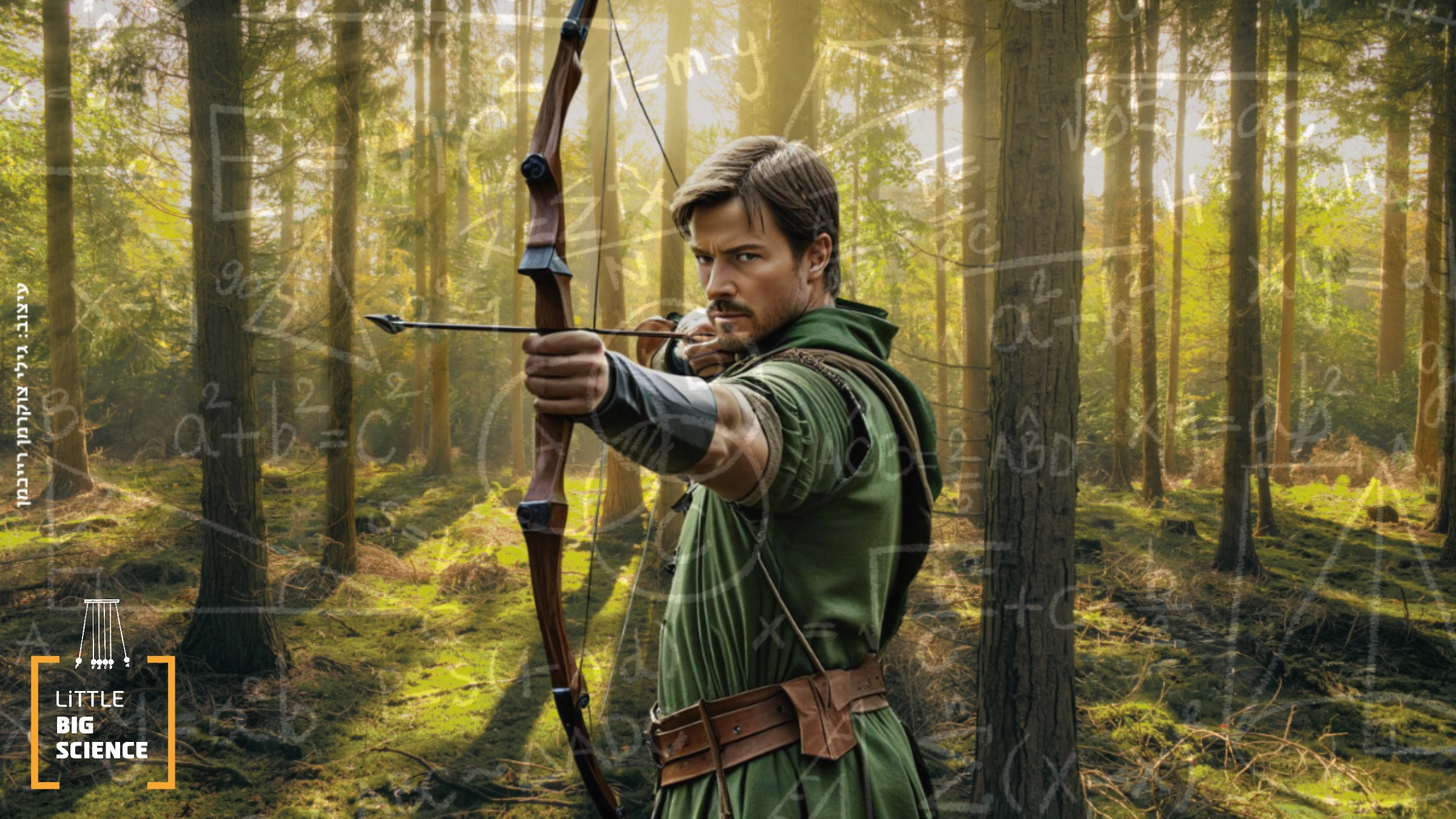
In a previous article we wrote about the science behind the bow and arrow [1]. This time, we look to the true greats: Legolas, Hawkeye, and Green Arrow. What makes them legendary archers? Are their abilities possible in reality, or is it merely cinematic magic? Join us to find out.
Advertisement
We begin with the film “The Lord of the Rings: The Fellowship of the Ring” (2001). In one of the film’s iconic scenes, Legolas saves his companions from an orc attack.
He kills seven orcs using only seven arrows, all within 15 seconds. Although skilled archers can hit targets as depicted in the scene, the rapid rate of fire—especially under conditions of movement and chaotic combat—is exaggerated. In reality, a reasonable firing rate is one arrow every 5–10 seconds: after all, you need to draw an arrow from the quiver, position it correctly, draw the bowstring, aim, release, and hit with precision. For comparison, skilled archers in the Middle Ages who used the English longbow managed to shoot at what was considered a very fast rate—up to 12 arrows per minute, which is almost 2.5 times slower, and only for a short period. On the other hand, Legolas is one of the elves and is thousands of years old, so he had plenty of time to practice rapid shooting and improve his performance.
Scientific Accuracy: 5/10.
Another inaccuracy that appears in several scenes in the trilogy (such as in the battle of Rohan or in the battle of Helm's Deep) is also present in many other films: the commander gazes determinedly toward the horizon, waiting for the enemy to approach close enough to give the order to fire, while the camera pans over the row of archers, holding their bows drawn with rippling muscles. Cinematically, this is an excellent scene—it builds suspense and is beautifully shot. But is it realistic? No.
Recall that when the bowstring is drawn, the bow stores elastic potential energy. The moment the string is released, this energy is rapidly converted into the kinetic energy of the arrow. So if the archer holds the string drawn for an extended period, two things will happen. First, physically, the archer will tire more quickly, as his muscles will strain over time to keep the string drawn. A decline in motor control and slight trembling in the arms are expected—not ideal when archers are launching an attack.
Second, mechanically: although the bow is designed to store elastic energy, holding it drawn for a long time can affect it. Over time, continuous strain on the bow’s materials may cause fatigue and deformations. In the short term, this can lead to deviations in the arrow’s trajectory, and in the long term, it could result in damage, even a change in shape or breakage of the bow. [2]
Scientific Accuracy: 0/10.
Let us move on to comic book archers, such as Marvel’s Hawkeye or DC Comics’ Green Arrow.

They use special trick arrows: sticky arrows, exploding arrows, fire-extinguishing arrows, and more. Let us momentarily disregard technologies that do not exist (such as firing Pym Particles that crush cars-–for more on that, go to our article about Ant-Man [3]). Recall that the arrow must be light, flexible, and aerodynamic. If an arrow has a heavy head, the extra weight will significantly affect its trajectory and accuracy, especially in long-range shooting. The main reasons for this are the additional weight and its distribution along the arrow.
Let’s begin with the additional weight: as the mass of the arrow increases, more force is required. This is due to momentum considerations that tie the force applied to an object to its mass and velocity. If we want to achieve the same speed with a heavier arrow, more force must be exerted [4]. Even if we assume that increasing the force poses no limitation—after all, we are talking about brawny warriors—there will still be an issue due to weight distribution. For the arrow to travel through the air as intended, proper balance of the weight along its length is required. If the front part of the arrow is too heavy, the balance will be disrupted, which could affect its stability and accuracy, leading it to deviate from its trajectory.
Additionally, changes in weight or shape can affect air resistance, leading velocity loss and an abnormal trajectory. Beyond aerodynamic issues, the weight of the arrows also affects shooting comfort and the number of arrows one can carry. Another point is that these trick arrows increase the complexity of the system and raise the likelihood of malfunction. Naturally, if we were to use something light and slender (similar to a real arrowhead), the shooting would be more precise. In other words, the scene where they fired a USB drive to disable a gigantic spaceship hit the mark.
Scientific Accuracy: 3/10.
Moving on to scenes where several arrows are fired at once, as seen in the film “Wonder Woman” (2017).
Firstly, before shooting, the arrows must be arranged so that they do not interfere with one another. Additionally, the archer must exert a precise force calibrated for the arrows so that they hit their target accurately.
Here too, there is a mass issue: after all, several arrows weigh more than a single arrow, so more force must be applied and the shooting process must be more precise (assuming that the bow’s mechanical properties allow it, and that it does not break). Simultaneous shooting is possible, but it is less suited for chaotic battlefields and more for artistic performances and demonstrations. It would be more effective simply to shoot arrow after arrow at a rapid pace (like Legolas). In other words, the character of Black Widow (Scarlett Johansson), who is capable of shooting two guns simultaneously, is preferable [5].
Scientific Accuracy: 10/10, Practical Accuracy: 2/10.
And what about the scenes in which a folding bow unfolds with the push of a button and the arrow is immediately launched afterward? Style points: 10. In reality, folding bows exist, but their folding is intended primarily for convenient transport. The folding and unfolding affect the accuracy of the weapon, requiring adjustments and recalibration before use. Additionally, exposing the bow to shocks before shooting (for example, hitting an alien on the head) could impair the bow’s structure and performance.
Scientific Accuracy: 5/10.
In conclusion, it is important to remember that behind every precise shot there are many hours of training and a solid understanding of physics: aerodynamic considerations, physiology, materials engineering, and more. Let us remind you that it is always important to exercise caution, since we are dealing with a dangerous weapon—unless you are an American, a member of an entire nation that makes sure to supply us with entertaining videos, like videos of shooting arrows into apples on top of people’s heads.
Hebrew Editing: Smadar Raban
English Editing: Elee Shimshoni
References:
[1] The Science Behind Archery
[2] Study on Wood Types for Bow Construction – Stiffness and Strength
[3] Post on Ant-Man
[4] Momentum









